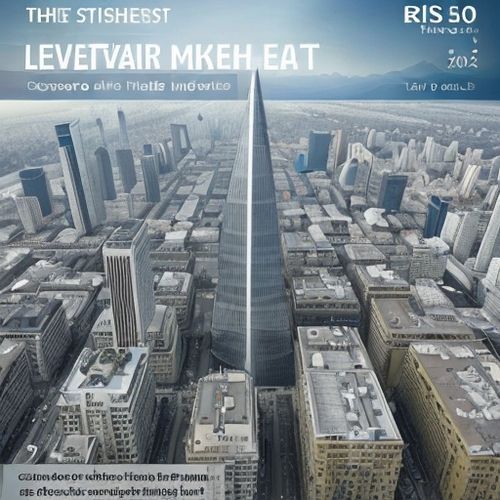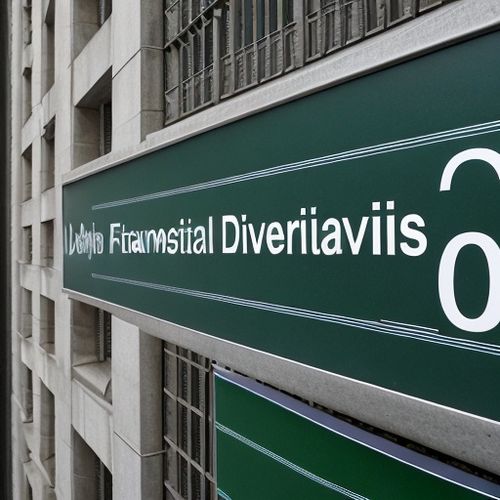Real Estate Investment Trusts (REITs) have long been hailed as a cornerstone of income-focused portfolios, offering investors exposure to real estate assets with the liquidity of publicly traded stocks. However, the sector’s reputation for stable yields has been tested in recent years, as shifting interest rates, pandemic-driven market dislocations, and evolving property fundamentals redefine risk-reward dynamics. While headline dividend yields of 5-8% remain alluring, beneath the surface lie complex traps—from leveraged balance sheets to sector-specific vulnerabilities—that can erode returns. Simultaneously, structural shifts in global real estate, including the rise of logistics hubs and renewable energy infrastructure, are creating fresh opportunities for discerning investors. This article unpacks the dual narrative of REIT investing, exploring how yield traps emerge, where hidden value resides, and strategies to navigate this bifurcated landscape.
The Illusion of Safety: How Leverage Amplifies Yield Risks
At first glance, REITs’ mandated 90% income distribution policy suggests reliability, but high payout ratios often mask underlying fragility. Many REITs employ aggressive leverage to boost yields, particularly in capital-intensive sectors like hospitality and retail. Before the 2020 pandemic, mall REITs such as Simon Property Group carried debt-to-EBITDA ratios exceeding 6x, leaving them vulnerable when tenant bankruptcies and rent deferrals surged. Even today, with rates at decade highs, office REITs like Boston Properties maintain leverage ratios above 50%, despite vacancy rates hitting 18% in major U.S. markets. The trap springs when rising borrowing costs collide with stagnant rents: in 2023, U.S. REITs collectively paid 32% of their operating income toward interest expenses, up from 19% in 2021. Investors chasing yields often overlook these balance sheet pressures until dividend cuts materialize, as seen with German residential REIT Vonovia’s 40% payout reduction in early 2024.
Sectoral Divergence: From Retail Ruin to Industrial Renaissance
The pandemic accelerated a seismic shift in property valuations that continues to reshape REIT opportunities. Traditional yield bastions like shopping malls and office spaces have become value traps, with mall REIT dividends declining 65% since 2019. Conversely, industrial and logistics REITs have emerged as growth engines, fueled by e-commerce and supply chain localization. Prologis, the global warehouse giant, has seen funds from operations (FFO) grow 22% annually since 2020, supported by 97% occupancy rates and 15% annual rent hikes. Data center REITs like Digital Realty ride the AI boom, with power density requirements for AI servers driving 30% premium rents in northern Virginia’s “Data Center Alley.” This divergence creates pockets of opportunity: while retail REITs trade at 40% discounts to net asset value (NAV), industrial REITs command 15% premiums, suggesting market efficiency in pricing sectoral risks.
The Interest Rate Tightrope: Duration Mismatch in a Higher-For-Longer World
REITs’ sensitivity to interest rates creates a unique duration risk. Unlike bonds, which have fixed maturities, REITs are perpetual instruments with cash flows tied to lease terms—typically 5-10 years for commercial properties. This mismatch became stark in 2022-2023 when the Fed’s 525-basis-point rate hikes triggered a 35% plunge in REIT valuations, despite many landlords having 90% fixed-rate debt. The pain was uneven: healthcare REITs with long-term triple-net leases to creditworthy tenants fared better, while short-lease sectors like self-storage (average lease length: 1 month) suffered dramatic multiple compression. Today’s “higher for longer” rate environment demands granular analysis: REITs with debt maturities clustered in 2025-2026, like Alexandria Real Estate Equities, face refinancing risks at rates 300 basis points above existing loans, potentially erasing 20% of FFO.
Geographic Arbitrage: Emerging Markets’ Demographic Dividend
While developed market REITs grapple with aging portfolios and rate shocks, emerging markets offer demographic-driven growth—with caveats. Indian REITs, fueled by 25 million annual urban migrants, have delivered 18% total returns since 2019, led by office parks like Embassy REIT. However, currency volatility remains a sword of Damocles: a 10% rupee depreciation could wipe out a year’s dividend yield. Brazil’s residential REITs tap into a 7-million-unit housing deficit, but inflation-linked leases (85% of contracts) become double-edged swords when monetary tightening lags. For global investors, these markets require hybrid strategies: pairing high-yield Brazilian property credits (12% yields) with forex hedges, or targeting Southeast Asian industrial REITs like Malaysia’s Axis REIT that benefit from U.S.-China supply chain shifts.
ESG as Alpha Generator: Beyond Greenwashing
The ESG revolution is reshaping REIT valuations beyond token green certifications. European regulators now mandate “brown discount” disclosures—the value penalty for non-compliant buildings—which average 15% for offices lacking 2030 decarbonization plans. Forward-looking REITs are turning sustainability into profit: U.S. office landlord Kilroy Realty installed onsite solar at 60% of its properties, cutting energy costs by 40% while charging 10% rent premiums. Conversely, stranded assets loom: 25% of U.S. retail REIT portfolios consist of single-story plazas incompatible with EV charging retrofits. ESG-focused investors now use granular data tools, like GRESB scores, to identify REITs where sustainability investments boost NOI (net operating income) rather than inflate expenses.
The Private Market Overhang: NAV Myths and Liquidity Realities
REITs’ traditional premium/discount to NAV metric has been scrambled by private market distortions. With $400 billion in dry powder targeting real estate, private equity firms are overpaying for trophy assets—Manhattan’s St. Regis Hotel sold at a 3% cap rate in 2023, dragging down REIT NAV comparables. This creates a perverse dynamic: REITs like Host Hotels trade at 30% NAV discounts because their high-quality assets are benchmarked against irrational private transactions. Liquidity mismatches compound the issue: open-end private real estate funds facing redemption runs (e.g., Blackstone’s BREIT) are dumping assets at 20% discounts, creating NAV headwinds for publicly traded peers. Savvy investors now parse REIT disclosures for “marked-to-market” debt adjustments, identifying firms like Rexford Industrial that actively manage hedges to neutralize cap rate volatility.
Innovative Structures: REIT 2.0 and Beyond
The sector is innovating to escape traditional yield traps. Mortgage REITs (mREITs), once synonymous with credit risk, now offer collateralized loan obligations (CLOs) for infrastructure projects—Brookfield’s renewable energy mREIT yields 9% with 75% LTV ratios. Hybrid REITs like Crown Castle blend tower leases (95% occupancy) with fiber-optic ventures, achieving 7% annual AFFO growth. Japan pioneered developer-led REITs where firms like Mitsui Fudosan seed assets post-leasing, eliminating development risk. The next frontier is tokenization: U.S. regulators approved Arca’s digital REIT in 2024, allowing fractional ownership of distressed office assets with blockchain-driven liquidity.
Tactical Plays: Cycle Positioning and Activist Catalysts
Current market dislocation offers tactical entry points. As the Fed nears its rate peak, REITs with strong balance sheets (debt/EBITDA <5x) and short lease durations stand to benefit from eventual cuts. Student housing REITs like American Campus Communities, trading at 25% discounts to replacement cost, could rebound as university enrollments stabilize. Activist investors are forcing value realization: Land & Buildings targeted Mack-Cali in 2024, pushing asset sales that unlocked $15/share in hidden value. Meanwhile, short opportunities persist: co-working REITs like IWG trade at 20x FFO despite 40% occupancy in hybrid work economies.
The REIT sector’s yield narrative has fractured into a mosaic of risks and rewards. While the old paradigm of “bond proxies with growth” has crumbled under rate pressures, new opportunities emerge from global supply chain shifts, technological disruption, and sustainability mandates. Success now demands a barbell approach: pairing defensive healthcare or data center REITs with select high-conviction bets on emerging markets or distressed sectors. Investors must look beyond headline yields, scrutinizing debt maturity walls, lease structures, and private market crosscurrents. As the industry evolves—embracing proptech, decarbonization, and alternative assets—the very definition of a REIT may expand, offering fresh avenues to balance income and growth. In this transformed landscape, avoiding traps requires rigor, but the rewards for those who navigate wisely could redefine real estate’s role in modern portfolios.

By Noah Bell/Mar 30, 2025

By Christopher Harris/Mar 30, 2025

By Benjamin Evans/Mar 30, 2025

By Victoria Gonzalez/Mar 30, 2025

By Daniel Scott/Mar 30, 2025

By Ryan Martin/Mar 30, 2025

By Sarah Davis/Mar 30, 2025

By Samuel Cooper/Mar 30, 2025

By Jessica Lee/Mar 30, 2025

By Jessica Lee/Mar 30, 2025

By Christopher Harris/Mar 30, 2025

By John Smith/Mar 30, 2025

By Ryan Martin/Mar 30, 2025

By Amanda Phillips/Mar 30, 2025

By Eric Ward/Mar 30, 2025

By Emily Johnson/Mar 30, 2025

By Amanda Phillips/Mar 30, 2025